If you’re looking for the most efficient roof design, you have come to the right place! In this article, we will explore different roof designs and their efficiency. Whether you are building a new home or considering a roof replacement, understanding the benefits of different roof designs can help you make an informed decision. So, let’s dive into the fascinating world of roof designs and discover which one is the most efficient for your needs.
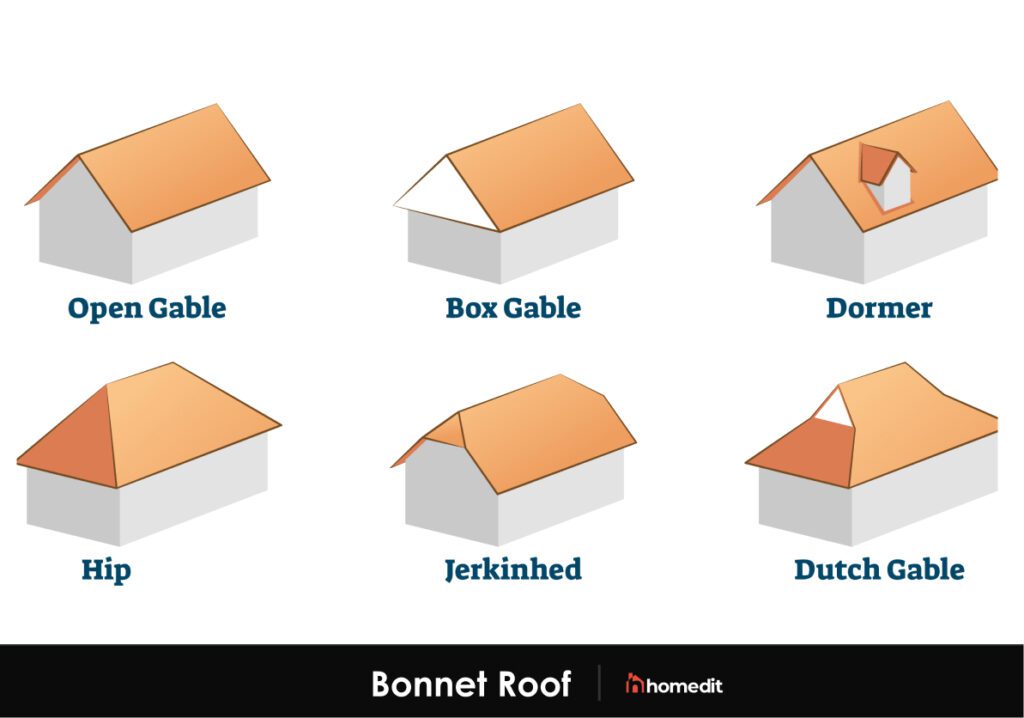
What is the most efficient roof design?
When it comes to designing a roof, efficiency is paramount. The efficiency of a roof design refers to its ability to effectively perform its intended functions while minimizing energy consumption, optimizing structural integrity, and meeting desired sustainability goals. In order to determine the most efficient roof design, it is important to consider various factors that can influence its overall efficiency. These factors include climate and geographical location, roofing materials, roof slope and orientation, insulation, and ventilation.
1. Definition of efficiency in roof design
Understanding the concept of efficiency in roof design
Efficiency in roof design encompasses both energy efficiency and structural efficiency. Energy efficiency refers to the ability of a roof to effectively insulate and regulate the temperature of a building, minimizing the need for excessive heating or cooling. Structural efficiency, on the other hand, focuses on the strength and stability of the roof, ensuring that it can withstand the external elements and various loads placed upon it.
Energy efficiency in roof design
Energy efficiency is a crucial aspect of roof design as it directly impacts the energy consumption of a building. An energy-efficient roof design incorporates materials, insulation, and ventilation systems that minimize heat transfer and maintain stable indoor temperatures. By reducing the need for artificial heating or cooling, energy-efficient roofs can significantly decrease utility bills and contribute to a more sustainable built environment.
Structural efficiency in roof design
Structural efficiency in roof design involves the selection of appropriate materials and construction techniques to ensure the roof can withstand external loads, such as snow, wind, and rain. A structurally efficient roof design takes into account the specific conditions of the building’s location, including the climate, seismic activity, and exposure to extreme weather events. By optimizing the structural integrity of the roof, it can better protect the building and its occupants over the long term.
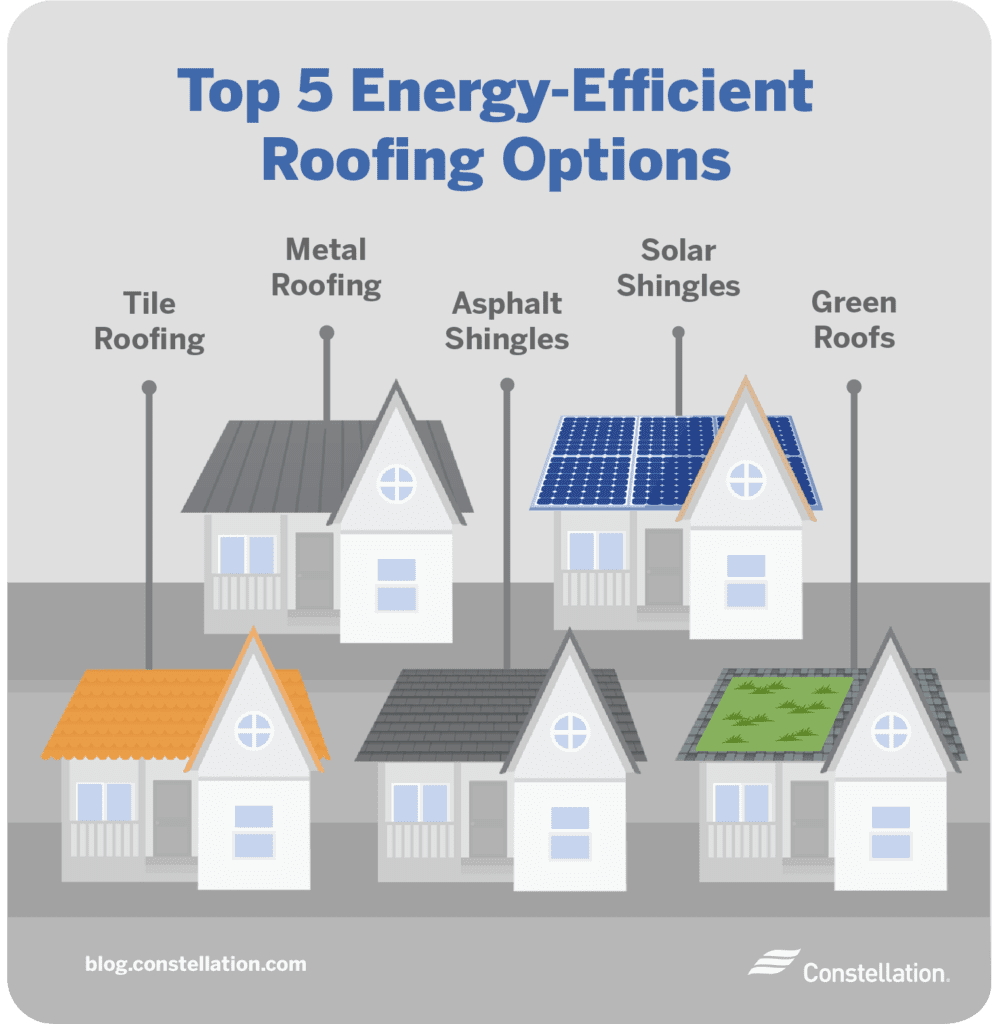
2. Factors affecting the efficiency of roof design
Several factors play a crucial role in determining the efficiency of a roof design. These factors need to be carefully considered during the planning and design phase to achieve the most efficient outcome.
Climate and geographical location
The climatic conditions and geographical location of a building greatly influence the design of its roof. In regions with hot climates, for instance, roofs with high solar reflectance and thermal emittance are more efficient in reducing heat gain. Similarly, in areas prone to heavy rainfall or snow, a steeper roof slope with appropriate drainage systems is essential to prevent water or snow buildup.
Roofing materials
The choice of roofing materials has a significant impact on the efficiency of a roof design. Certain materials, such as metal or tile, offer excellent durability and reflectivity, reducing the absorption of solar heat. Additionally, the selection of roofing materials should take into account factors such as weight, maintenance requirements, and lifespan, to ensure long-term efficiency.
Roof slope and orientation
The slope and orientation of the roof affect its exposure to sunlight and prevailing wind patterns. A roof with an appropriate slope and orientation can maximize the capture of solar energy for photovoltaic or solar thermal systems, while also promoting natural ventilation. Additionally, the shape of the roof can affect the shedding of rainwater or snow, minimizing potential damage or leakage.
Insulation
Proper insulation is a key factor in determining the energy efficiency of a roof design. Effective insulation helps to regulate the temperature inside the building, reducing the reliance on heating or cooling systems. Insulation materials with high thermal resistance, such as fiberglass or cellulose, are commonly used to minimize heat transfer through the roof.
Ventilation
A well-designed ventilation system is essential for maintaining a comfortable indoor environment and preventing moisture buildup. Proper ventilation helps to remove excess heat during hot seasons and moisture during rainy or humid periods, improving energy efficiency and preventing potential damage to the roof structure.
3. Importance of efficient roof design
Efficient roof design offers a multitude of benefits that make it a worthwhile investment for any building. From energy savings to enhanced comfort, the importance of efficient roof design cannot be overstated.
Energy savings and reduced utility bills
Perhaps the most apparent advantage of an efficient roof design is the potential for significant energy savings. By minimizing heat transfer and optimizing insulation, efficient roofs can drastically reduce the need for artificial heating or cooling, ultimately leading to lower utility bills. The long-term energy savings achieved through an efficient roof design can make a substantial impact both environmentally and economically.
Environmental sustainability
Efficient roof design plays a vital role in promoting environmental sustainability. By reducing energy consumption and greenhouse gas emissions, energy-efficient roofs contribute to mitigating climate change and preserving natural resources. Additionally, certain types of efficient roofs, such as green roofs or roofs with integrated solar panels, provide opportunities for renewable energy generation and conservation of biodiversity.
Enhanced comfort and indoor air quality
Efficient roof design significantly improves the comfort levels inside a building. By regulating indoor temperatures and preventing drafts, an efficient roof design creates a more pleasant living or working environment. Furthermore, proper insulation and ventilation contribute to better indoor air quality by minimizing the infiltration of pollutants and allergens.
Increased property value
An efficient roof design can enhance the overall value of a property. Energy-efficient features, such as green roofs or solar roofs, are increasingly desirable in the real estate market. Efficient roofs not only provide economic benefits through reduced energy costs but also contribute to the aesthetic appeal and functionality of the building.
Long-term durability and reduced maintenance
Efficient roof designs are typically built to withstand the test of time. By selecting durable materials and implementing suitable construction techniques, the longevity and reliability of the roof can be significantly improved. In turn, this reduces the need for frequent repairs or replacement, resulting in lower maintenance costs and greater peace of mind for the building owner.
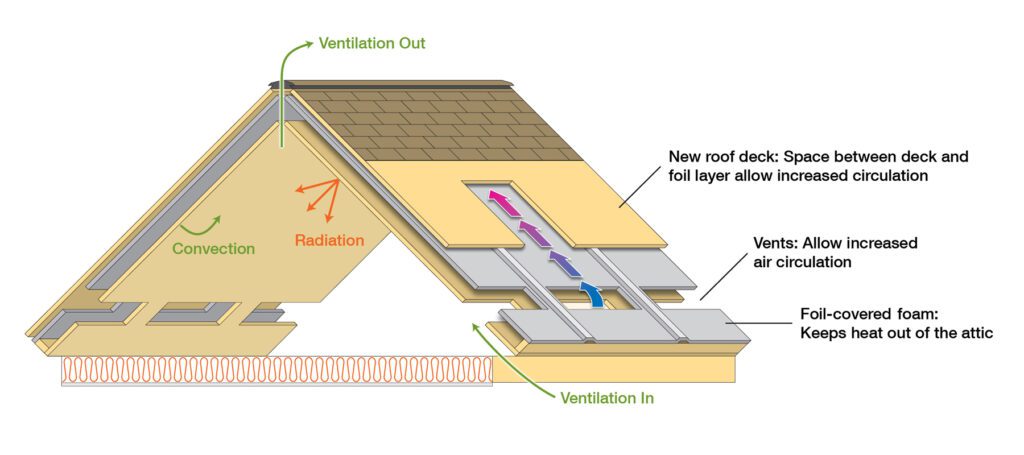
4. Different types of efficient roof designs
There are various types of efficient roof designs that have gained popularity due to their specific advantages and performance characteristics. These designs cater to different needs and climate conditions, providing a wide range of options for building owners and professionals.
Green roofs and living roofs
Green roofs, also known as living roofs, are designed to incorporate vegetation on the roof surface. They offer numerous benefits, including improved insulation, reduction of stormwater runoff, enhancement of biodiversity, and aesthetic appeal. Green roofs contribute to energy efficiency by reducing heat absorption and providing natural cooling through evapotranspiration.
Cool roofs
Cool roofs are designed to reflect more sunlight and absorb less heat compared to traditional roofs. They are typically constructed using highly reflective materials, such as reflective coatings or light-colored tiles. Cool roofs reduce the heat island effect in urban areas, improve energy efficiency, and minimize the need for air conditioning during hot weather.
Solar roofs
Solar roofs integrate photovoltaic panels into the roof design, allowing for the generation of clean and renewable electricity. These roofs harness solar energy to power the building, reducing reliance on external energy sources. Solar roofs contribute to energy efficiency and long-term cost savings while also reducing carbon emissions.
Metal roofs
Metal roofs have gained popularity due to their durability, lightweight construction, and excellent reflectivity. They are often made of recyclable materials and can withstand harsh weather conditions, making them a sustainable choice. Metal roofs contribute to energy efficiency by reflecting solar heat, reducing cooling loads, and providing long-term performance.
Flat roofs
Flat roof designs are commonly used in commercial and residential buildings. They offer a sleek and modern aesthetic, while also providing opportunities for the installation of green roofs, solar panels, or rooftop gardens. Efficient insulation is critical for flat roofs to prevent heat loss or gain and ensure effective energy management.
Pitched roofs
Pitched roofs, also known as sloped roofs, are one of the most common roof designs globally. They are versatile, allowing for various combinations of materials, such as shingles, tiles, or metal sheets. The slope of the roof can be optimized to maximize solar energy capture, shed rainwater or snow, and enhance natural ventilation.
5. Energy-efficient roofing materials
The choice of roofing materials has a significant impact on the energy efficiency of a roof design. Various options are available for energy-efficient roofing, each offering unique characteristics and benefits.
Cool roof coatings
Cool roof coatings are specially formulated to reflect sunlight and maintain lower surface temperatures. These coatings can be applied to various roofing materials, including asphalt shingles, metal, or concrete tiles. By reducing heat absorption, cool roof coatings contribute to energy savings, extend the lifespan of the roof, and improve indoor comfort.
Reflective roofing materials
Reflective roofing materials, such as light-colored tiles or metal sheets, have natural reflective properties. They minimize heat absorption and contribute to lower cooling load requirements. Reflective roofs are particularly beneficial in regions with a hot climate, as they can significantly reduce the need for air conditioning and associated energy consumption.
Insulating and thermal materials
Insulating and thermal materials play a crucial role in maintaining stable indoor temperatures and reducing energy loss. Common insulating materials used in roof design include fiberglass, cellulose, or spray foam insulation. These materials provide a barrier against heat transfer, ensuring a comfortable interior environment and reducing heating or cooling demands.
Durable and weather-resistant materials
The durability and weather resistance of roofing materials are essential for long-term efficiency and reduced maintenance costs. Materials such as metal, tile, or slate offer excellent resistance to extreme weather conditions, including high winds, hail, or heavy rain. Using durable materials ensures the roof maintains its integrity and protects the building over its lifespan.
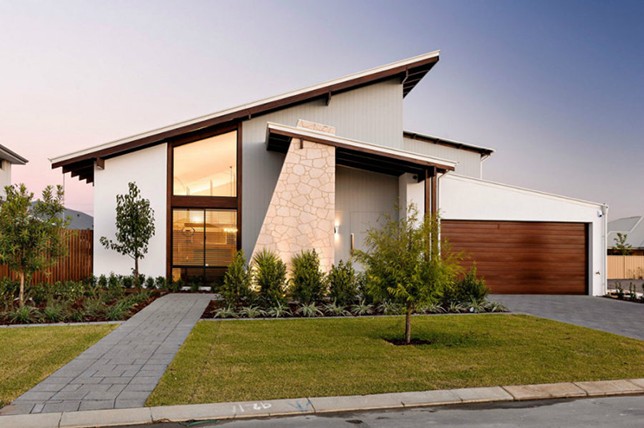
6. Innovations and advancements in roof design efficiency
As technology continues to evolve, new innovations and advancements are transforming the efficiency of roof design. These advancements focus on integrating smart systems, renewable energy technologies, and automation to enhance the overall performance of roofs.
Cool roof technologies
Advancements in cool roof technologies have resulted in the development of more efficient and durable reflective coatings. These technologies improve solar reflectance, minimize heat absorption, and enhance the lifespan of roofs. Additionally, cool roof technologies now incorporate materials with self-cleaning properties, reducing maintenance requirements.
Solar panel integration
Integrating solar panels into roof designs allows for the generation of renewable energy while maximizing space utilization. Advancements in solar panel technologies have made them more efficient, lightweight, and aesthetically pleasing. Solar panel integration in roof design promotes energy self-sufficiency and reduces dependency on fossil fuel-based electricity.
Smart and energy-efficient roofing systems
Smart roofing systems utilize sensors, automation, and data analysis to optimize energy efficiency and performance. These systems can adjust ventilation, insulation, or shades based on weather conditions, occupancy levels, or time of day. By continuously monitoring and adapting to environmental factors, smart roofing systems can optimize energy consumption and enhance occupant comfort.
Automated ventilation and insulation control
Automated ventilation and insulation control systems are designed to maintain adequate airflow and temperature regulation. These systems adjust ventilation rates and insulation levels based on real-time data, contributing to improved energy efficiency and indoor air quality. By automating these functions, building owners can achieve optimal performance without manual intervention.
7. Cost considerations of efficient roof design
While efficient roof design offers numerous benefits, it is important to consider the associated costs and potential return on investment.
Initial installation costs
Efficient roof designs may involve higher upfront costs compared to traditional roof designs. The use of advanced materials, specialized installation techniques, and integration of energy-efficient features can increase the initial investment. However, it is essential to evaluate these costs in relation to long-term energy savings and other benefits when considering the overall value of the investment.
Return on investment (ROI)
Efficient roof design can yield a substantial return on investment over time. The energy savings and reduced maintenance costs associated with efficient roofs can offset the initial installation costs, resulting in long-term financial benefits. Additionally, energy-efficient features, such as solar panels or green roofs, can generate revenue through energy production or increased property value.
Maintenance and repair costs
Efficient roof designs often require regular inspections and maintenance to ensure optimal performance. While the need for maintenance may slightly increase compared to traditional roofs, the benefits of reduced energy consumption and increased durability typically offset these costs. Regular maintenance and prompt repairs can help prevent more extensive damage and prolong the lifespan of the roof.
Long-term energy savings
Efficient roof designs offer significant long-term energy savings. By minimizing heat loss or gain, optimizing insulation, and utilizing renewable energy technologies, these roofs can substantially reduce energy consumption. The cumulative energy savings over the lifespan of an efficient roof can result in substantial cost savings, making it an economically viable choice in the long run.
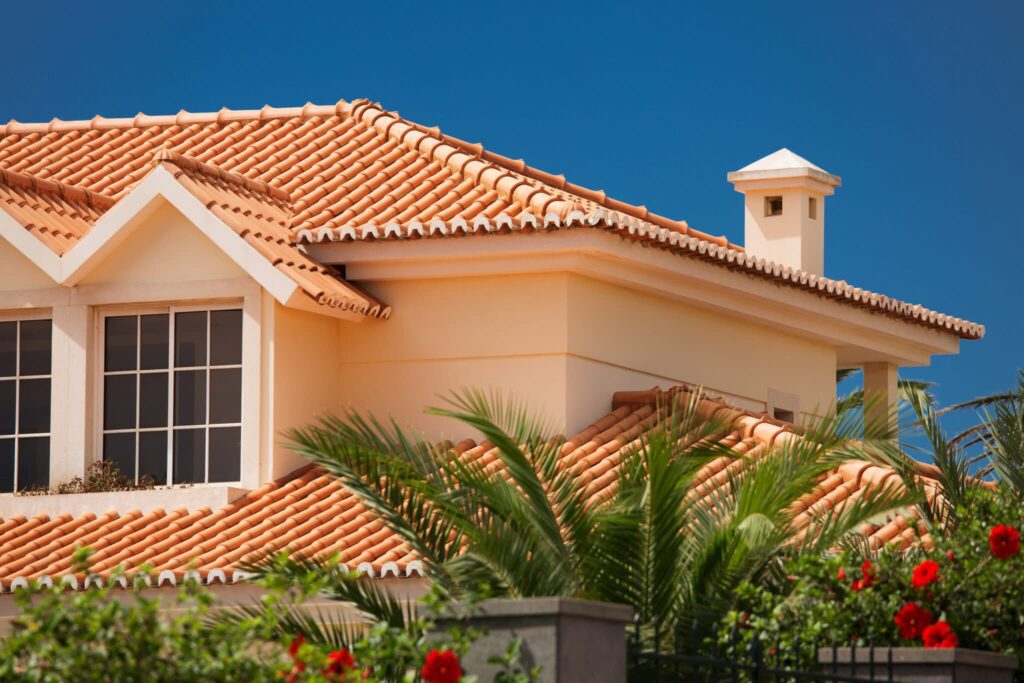
8. Strategies for optimizing roof design efficiency
Several strategies can be employed to optimize the efficiency of roof design and maximize its potential benefits.
Proper insulation and air sealing
Proper insulation and air sealing are fundamental for achieving energy efficiency in roof design. Ensuring insulation materials are correctly installed and air leaks are minimized prevents heat transfer and maintains stable indoor temperatures. This reduces the need for supplementary heating and cooling systems, resulting in energy savings.
Optimal roof slope and orientation
The roof slope and orientation play a critical role in optimizing energy efficiency. Designing the roof with the appropriate slope and orientation allows for optimal solar energy capture, ventilation, and rainwater runoff. By considering the specific climatic conditions of the location, the roof can be optimized to maximize energy performance.
Effective use of natural light
Incorporating natural light into roof design reduces the need for artificial lighting and promotes energy efficiency. Skylights or windows strategically positioned on the roof allow for daylight to penetrate into the building, creating a well-lit and comfortable interior. Additionally, natural light enhances occupant well-being and productivity.
Comprehensive water management
Proper water management is essential for ensuring the efficiency and longevity of a roof design. Effective drainage systems, including gutters and downspouts, prevent water buildup and potential damage to the roof structure. Regular maintenance and inspections of the drainage system are crucial to avoid leaks, clogs, or other water-related issues.
Appropriate roof maintenance practices
Regular roof maintenance is essential for prolonging the lifespan and efficiency of a roof design. Inspections, repairs, and cleaning should be performed periodically to address any potential issues, such as leaks, damaged flashing, or accumulated debris. Adopting a proactive approach to roof maintenance helps prevent more significant problems and ensures optimal performance.
10. Future trends in roof design efficiency
The future of roof design efficiency is promising, with ongoing advancements and trends that further enhance performance and sustainability.
Integration of renewable energy systems
The integration of renewable energy systems, such as solar panels or wind turbines, is expected to become more prevalent in roof design. These systems will play an increasingly significant role in reducing energy consumption and carbon emissions, while also providing opportunities for energy self-sufficiency and cost savings.
Zero-energy buildings
The concept of zero-energy buildings, where the energy consumed is equal to or even lower than the energy produced on-site, is gaining traction. Efficient roof design will play a pivotal role in achieving zero-energy goals, with roofs incorporating renewable energy generation, advanced insulation, and smart systems to optimize energy use.
Improved building codes and standards
Building codes and standards are continuously evolving to promote energy efficiency and sustainability. Future advancements in roof design efficiency will likely be driven by stricter regulations and requirements for reducing energy consumption, increasing insulation levels, and implementing renewable energy technologies.
Advancements in materials and technology
The development of advanced materials and technologies will continue to revolutionize the efficiency of roof design. From innovative insulation materials to improved solar panels, these advancements will offer greater durability, energy performance, and aesthetic possibilities for roofs. Continuous research and development efforts will shape the future of efficient roof design.
In conclusion, the most efficient roof design is a combination of energy efficiency and structural integrity. Several factors, including climate, roofing materials, slope, insulation, and ventilation, influence the efficiency of a roof design. Efficient roofs offer numerous benefits, such as energy savings, enhanced comfort, increased property value, and reduced maintenance. Different types of efficient roof designs and energy-efficient roofing materials cater to various needs and geographical conditions. Innovations and advancements, such as cool roof technologies and smart roofing systems, further optimize roof design efficiency. The cost considerations of an efficient roof design include initial installation costs, return on investment, maintenance and repair costs, and long-term energy savings. Strategies for optimizing roof design efficiency include proper insulation, optimal slope and orientation, effective use of natural light, comprehensive water management, and appropriate maintenance practices. Future trends in roof design efficiency involve the integration of renewable energy systems, zero-energy buildings, improved building codes, and advancements in materials and technology. By prioritizing efficiency in roof design, buildings can achieve sustainable and cost-effective solutions for the future.